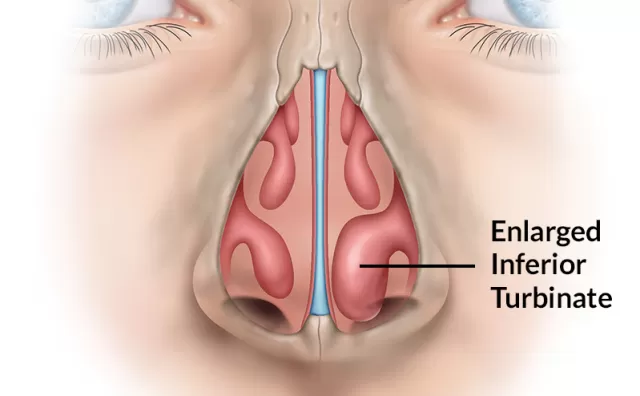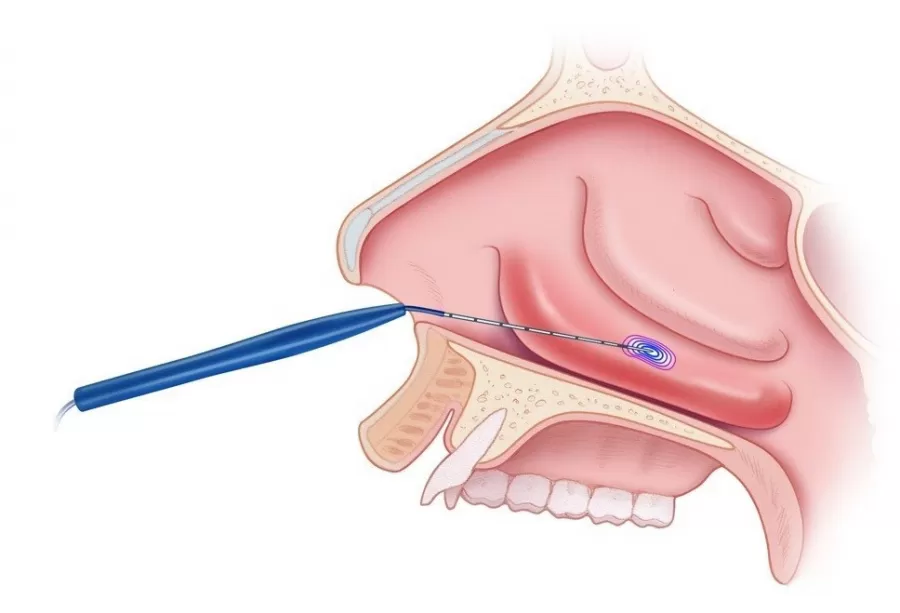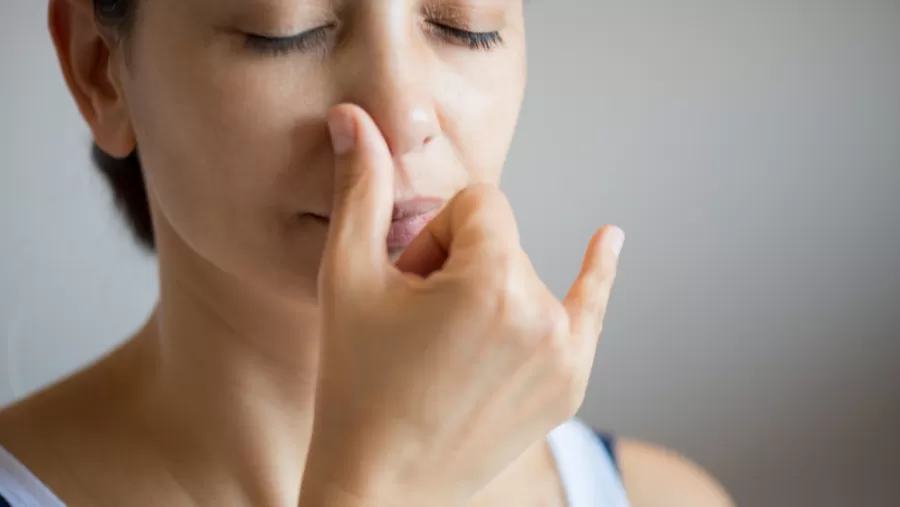-
ALLERGY IQ
Allergies and Health -

Children & Inhalant Allergies Allergies are a chronic disorder that starts early in life. It is one of the most common health conditions that affects one out of three children in the U.S. -

Oral Allergy Syndrome is Not Food Allergy Oral allergy syndrome (OAS) is often confused with food allergies but is not the same thing and is more common than people realize. -

Allergies & Poor Sleep Sleep is a huge factor in health and wellbeing. If your quality of sleep is affected by allergies, know that there are solutions. -

Hay Fever (Allergic Rhinitis) Unlike the common cold, hay fever is not caused by a virus. Instead, it’s caused by an allergic response to indoor/outdoor allergens like pollens, mold, mites.
-

How Allergies and Asthma are Related People who suffer from allergies can develop asthma and those with asthma can suffer from allergies. Both conditions are closely related. -

Allergy Load Find out why chronic allergic disease progresses with age, learn about Total Allergy Load, stressors, and why you don't want to delay allergy treatment.
Treating Allergies -

Managing Your Allergies Allergies are a serious burden on your immune system, not just runny nose, sneezing, and itchy eyes. Learn how to safely treat allergies for full-body health. -

Testing For Allergies: Is It Necessary? Allergy testing is a necessary step in treating symptoms of allergic rhinitis. Skin and blood tests can find the source and ideal treatment for your symptoms. -

Nasal Steroid Sprays Due to their high efficacy and safety, nasal steroid sprays are considered the first line of treatment for allergic rhinitis and other nasal conditions. -

Nasal Obstruction, Inhalant Allergies, and Turbinate Reduction Inhalant allergies can cause nasal obstruction and enlarged turbinates. Learn about the causes and treatment options for your chronic congestion.
-
- ALLERGY EXPLORER
- ALLERGY QUIZ
- SEARCH
- ACCOUNT
Nasal Obstruction, Inhalant Allergies, and Turbinate Reduction
What You Need to Know
Do you feel regular congestion or stuffy nose, even when you don't have a cold? You may be suffering from the long-term chronic effects of inhalant allergies. Many people don't realize allergies are to blame for symptoms of nasal obstruction.
Nasal breathing offers important benefits for your wel-lbeing like deeper inhales and increased oxygen circulation, which can help maintain full-body health. If you struggle with nasal obstruction and inhalant allergies, there are treatments and procedures to help you eliminate these frustrating symptoms.
What Causes Nasal Obstruction?
Nasal obstruction, or nasal congestion, can be caused by several different underlying issues. One of the most common causes is inhalant allergies. Though allergies might just seem like a small annoyance, they can have long-term effects on your health.
Inhalant allergies cause inflammation, leading to permanent turbinate tissue thickening, or hypertrophy, in the nose. That thickening can then decrease the size of the breathing passages and prevent full inhalation.
With that, you’ll feel a regular stuffy nose, congestion that alternates between nostrils, and all the frustration that goes with. Before we discuss how to treat the issue, let’s take a look at what goes on inside your stuffy nose:
What Are Turbinates?
Your nose has air filters in each side of the nasal passage called turbinates. The turbinates are responsible for filtering, humidifying, warming, and directing the air you breathe in.
Inside the nose, the inferior turbinate is a long scroll-shaped structure filling the lower portion of each airway. The size of the turbinates changes depending on factors like temperature, humidity, and irritants. Turbinates are vital for our healthy breathing, but they can become enlarged and block the air that they should be filtering.
When you feel that constant sensation of congestion or stuffy nose from enlarged turbinates, you might start mouth breathing. By relying only on breathing through the mouth, you miss out on the benefits of nasal breathing. If that happens, turbinate reduction may be the solution to open the nasal airways so you can continue normal healthy breathing through the nose.
Nasal Turbinate Enlargement
Chronic inhalant allergies or a deviated septum can permanently enlarge the turbinates. Additionally, infections, nasal decongestant sprays, and repeated exposure to irritants like smoke, smog, or chemical fumes can also cause inflammation and enlargement.

Not only that, but antihistamines and antibiotics can’t reverse the permanent turbinate thickening. Even after addressing the primary cause, often the turbinate enlargement remains.
When turbinates endure chronic inflammation from allergies, the tissue becomes hypertrophied. While the inflammation itself is reversible, hypertrophy is not - it requires surgery. Even if the tissue has not reached hypertrophy, in many cases, it may be resistant to treatment with anti-inflammatory topical nasal steroid sprays.
Signs and Negative effects of Turbinate Enlargement
If you’ve been dealing with chronic congestion or nasal obstruction, nasal turbinate enlargement might be the cause. Alternating nasal obstruction is often the first sign of enlarged turbinates caused by allergies - you could be suffering from inhalant allergies without knowing. But, years of ignoring allergies can lead to irreversible damage that can only be treated through surgery.
Enlarged nasal turbinates have severe repercussions on your daily life. You may experience chronic nasal congestion as a result of enlarged or inflamed turbinates. Additionally, alternating nasal obstruction, or congestion that switches between nostrils, is another signal. If you often deal with alternating nasal obstruction, enlarged turbinates may be the cause.
Chronic nasal airway obstruction can be uncomfortable and distressing. Blocked nasal airway passages force you to breathe through the mouth, making simple everyday activities like eating, speaking, and sleeping more difficult. For children, it can also affect facial and orthodontic growth.
Many over-the-counter topical nasal steroid sprays can alleviate nasal swelling and congestion, but these sprays are ineffective against long-term nasal obstruction. OTC nasal sprays cannot reverse the effects of years of chronic thickening of the turbinate tissues in the nose commonly associated with allergies. For many patients, a reduction procedure is the only solution.
Turbinate Reduction Surgery
There are various methods for reducing the size of the inferior turbinates, but the most common is use of radiofrequency or microdebrider. This minimally invasive technique reduces turbinate volume in around 5-10 minutes.
The method does not require any incisions in the nose, as the surgeon uses endoscopes to perform the procedure through the nostrils. Here’s how it works:
1.
A probe is placed within the nasal turbinate through a small opening.
2.
The swollen, thickened tissue beneath the mucous membrane surface is vaporized with a probe.
3.
With that, the mucous membrane layer of the turbinate is preserved to maintain nasal humidification and filtration of air.
4.
The procedure does not change the outward appearance of the nose, only the shape of the turbinates inside, reducing it to normal size.

Turbinate reduction

Airflow after turbinate reduction
In some cases, turbinate reduction surgery is combined with other procedures like adenoidectomy, tonsillectomy, sinus surgery, or septoplasty. However, this depends on the causes of the patient’s blockages.
After the Procedure
Patients undergoing turbinate reduction surgery usually feel back to normal after 1-2 days post-surgery. The aftercare is minimal, and you’ll likely be able to return to work or school within that time. There are a few other things to keep in mind post-surgery:
- There are no post-surgery dietary limitations. You may eat or drink what you want unless another simultaneous procedure requires restrictions. However, the risks of nausea or vomiting after anesthesia may make it easier to consume only clear liquids at first.
- Generally, you can expect mild discomfort for 1-2 days. Acetaminophen (Tylenol) or ibuprofen (Motrin) is usually appropriate for pain control. If needed, stronger pain medications may be prescribed.
- For the rest of the day after the procedure, blood may ooze from the nose intermittently. This is expected and can be controlled with over-the-counter oxymetazoline (Afrin) nasal spray to constrict the blood vessels. When bleeding stops that evening or the following day, the spray should be discontinued, and nasal saline spray started to keep the nasal membranes moist while healing. If you experience excess or continued bleeding, stop using ibuprofen (Motrin).
- As healing progresses, nasal crusting will slowly diminish until it subsides within 2 months of the procedure. Nasal saline irrigations can reduce crusting, improve symptoms, and speed the healing process.
- Avoid strenuous activity for 1-2 weeks to reduce the chance of nosebleeds.
- As your body heals, your ability to breathe will improve. You’ll feel the maximum benefit after 2 months but notice significant improvement within a few weeks.
- A follow-up review can usually be performed during your next routine allergy appointment.
Risks of Turbinate Reduction
The risks for this procedure are minimal, and thousands of people go through it every day. However, as with any procedure, there are some risks associated with turbinate surgery:
- There is a small risk of a complication occurring due to the anesthesia or nasal bleeding, which would require management using nasal packing.
- If the patient develops any concerning symptoms after surgery, they should seek immediate medical attention. Notable symptoms include pauses in breathing, color change of the skin (particularly if the lips, face, or hands are turning blue), appearing lethargic or tired, severe bleeding, or any other sudden change from normal behavior.
Always Treat the Underlying Issue
The most important thing to remember about nasal obstruction and turbinate reduction is that the problem will reappear if the primary issue is not dealt with. If allergies are not treated, then the turbinates will swell again, and the cycle will repeat. Managing your allergies is vital for preventing future problems.
Make sure you treat your inhalant allergy with a long-term solution like sublingual immunotherapy, or allergy drops. If not, the turbinate tissue will likely enlarge again after a few years, and you’ll need to repeat the procedure.
